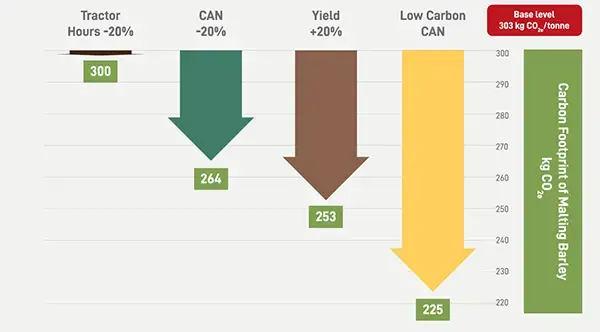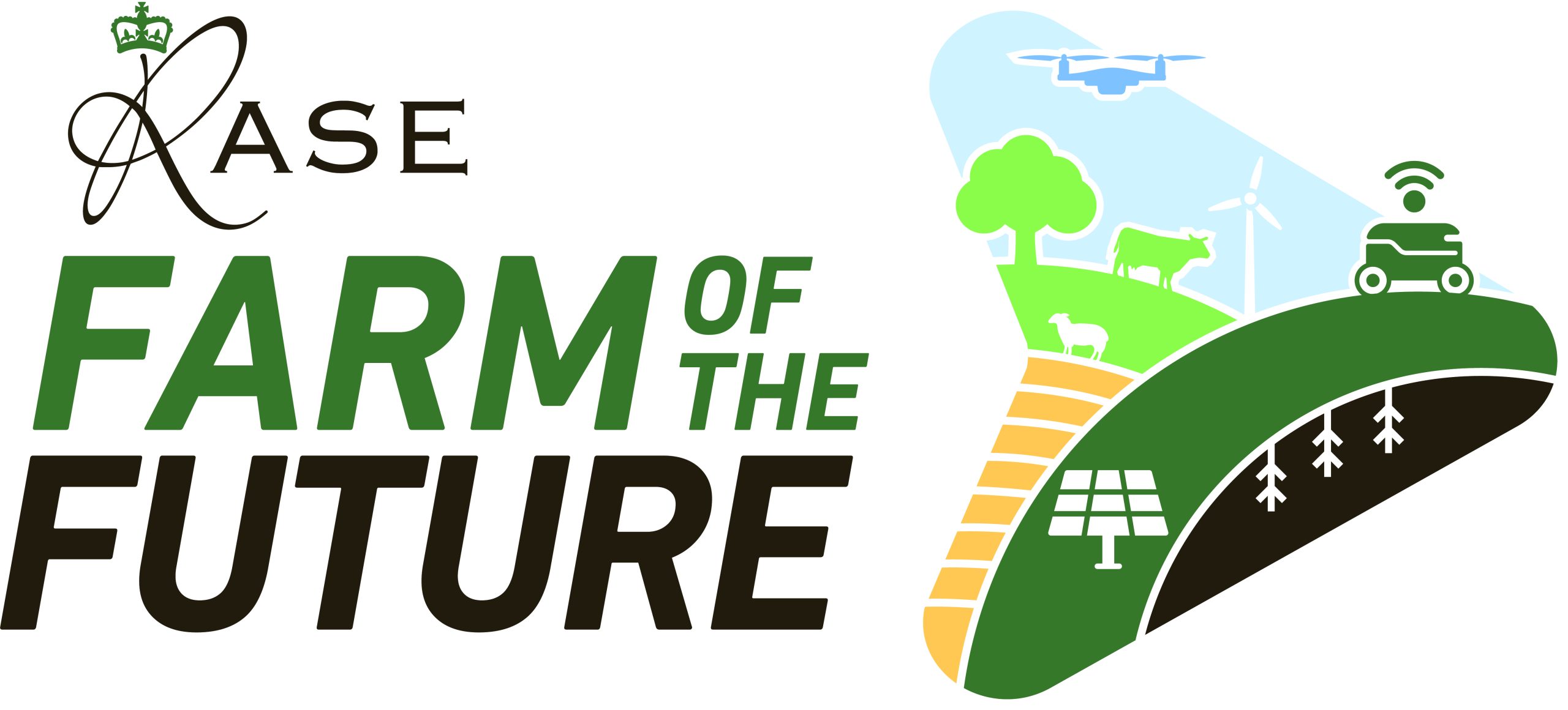by Nigel Davies, BSc, PhD, FIFST, Dipl Brew
Arable farmers are engaged in and receptive to change leading to emissions reduction, but the supply chain must demonstrate its commitment to action across the entire range of crops and markets which also takes account of farm size and output volumes.
- The food processing sector’s expectations of the arable supply chain will reflect their need to reduce emissions, driven by shareholder and customer expectations of environmental and social governance, creating added pressure back up the supply chain to farmers.
- Use of regenerative farming methods is attracting increasing interest, but there will be a range of responses from individual farming businesses to the system they select to reduce their emissions. Arable farmers will have access to a menu of land management options, but all of them will require evidence of commercial viability at a farm level.
- Arable transition needs support under the Environmental Land Management scheme in England (and associated initiatives in the devolved administrations), plus a demonstration farm network across production sectors, including public and commercial sector collaboration. More farms will be willing to become case studies to show emissions reduction leadership.
- Cereal farming has the ability to become carbon zero or even carbon negative through a range of regenerative agricultural practices. Farmers can play a part in halting and reversing the rise in greenhouse gas emissions on UK farms, by adopting commercially viable novel technologies and management practises.
- UK arable farmers and trade bodies need to develop benchmarking tools for emissions and carbon capture, with a standard measurement system to ensure transparency and allow effective comparison between different crops and production regimes.
- Existing arable technology and knowledge can deliver rapid improvement in resource use efficiency, but requires increased public and private funding to ensure innovations are sufficiently agile, market-ready, well demonstrated and capable of wider adoption.
- Better integration of farm data platforms is required for collecting performance metrics to enable meaningful decision making. Low carbon arable systems need to be developed and implemented with greater speed and commercial focus to demonstrate clear resource use efficiency benefits backed by financial margin improvement.
Arable farmers face increasing intervention at a national policy level to change farming practices. This must include soil management, reduction of fossil-based inputs and adoption of low emission fuels. Food and beverage processors will need to see reduced embedded carbon in the crops they process and will expect an ongoing reduction in supplier emissions.
The UK cereal sector must demonstrate its desire to reduce emissions. However, the uncertainty over the extent to which future legislation will incentivise or penalise farmers may stifle the uptake of proven innovations at the scale required to deliver such ambitions at a farm level.
Arable farming’s transformation is underway, albeit on a limited scale, but there are positive signs that UK cereal production can become ‘carbon neutral’ or even carbon negative, in time contributing to halting or even reversing the rise in greenhouse gas emissions from UK farms. However, creating profitable and sustainable systems remains a priority in 2025.
Supply chain influence
Change will be led by processing sectors and their customers, with their need to reduce supply chain emissions, driven by shareholder and stakeholder pressure for companies to reduce emissions more rapidly, which adds pressure up the supply chain to the farm gate.
Innovation in arable farming systems and changes in management practices need to be financially robust. But expectations of reduced supply chain emissions means that UK cereal producers must demonstrate to buyers that they are reducing their climate impact. Cutting emissions on UK arable farms may not require a revolution in farming practices but rather the evolution of emerging technologies and digital solutions with the capacity to monitor progress and aid crop management across the spectrum of farm sizes.
For several farming generations, this requires increased fixing of carbon on farms, including better soil management practices, to increase soil carbon stock.
The specialist cereals enterprise journey raises the interesting debate on carbon cycling versus carbon sequestration. Most farmers tend to have less interest in total sequestration (i.e. embedding carbon permanently – ‘zero carbon’). However, they can be more committed to the concept of carbon cycling (i.e. ‘net zero’ – resulting in an increasingly positive carbon balance). Farm systems which sequester more than they emit result in a positive build-up of carbon over time.
The shift towards incentives aimed at reducing emissions must embrace all arable farming activities – including those applicable to smaller farms that may lack the necessary technical support, as well as those larger farms (i.e. within the top productivity quartile) which are often perceived to be the main adopters of novel technologies.
Arable decarbonisation options
Options on arable farms include replacing fossil-sourced fertiliser use with abated nitrogen products, adopting improved cropping and tillage practices (‘minimum’ or ‘zero’ tillage), the inclusion of a higher proportion of legumes in cropping systems as cash crops, companion plants and cover crops to reduce reliance on manufactured nitrogen fertiliser inputs, as well as precision techniques to better match input application to plant requirements in order to address poor current nitrogen use efficiencies of c 45%.
To assist transformational change, younger farmers will need support including specialist advice, and perhaps mentoring. This should include better access to smart farming demonstration projects that show how to combine data from soil sensors, crop software and location-based GPS and satellite data and how it can be integrated with robotics or unmanned vehicles in field operating systems.
Climate-positive farming practices should be focused on improving soil organic matter, plus fertility and water infiltration (also reducing soil erosion and flood risk) and encouraging biodiversity.
A balance also must be struck between delivering crop yield consistency, reducing input use where possible and maintaining profitability. Policy makers will expect to see ‘additionality’, as a result of support funding – meaning that supported investment should have driven a reduction in emissions that would not have happened without the intervention.
Case study
The carbon footprint of malt
Muntons is a manufacturer of malt and malted ingredients, selling globally to over 90 countries, and has been committed for many years to using carbon tools to engage the supply chain.
The company has identified that barley is a major contributor to the total carbon footprint of malt, as over 60% of embedded carbon is from malting grade barley. They have worked successfully across the supply chain to create collective opportunities for improvement and generate integration.
Based upon an analysis of options (shown below) Muntons were the first to require their farmers to use an abated nitrogen fertiliser and used that to drive a 30% reduction in their barley carbon footprint in under 10 years.

This graph shows the reductions in carbon footprint for malting barley that could be achieved in different ways such as faster tractor, 20% less calcium ammonium nitrate (CAN) fertiliser, yield improvement of 20% or use of a lower carbon abated nitrogen fertiliser. The latter has the greatest effect and is cost neutral.
A more detailed version of this case study can be found in ‘Cereals Enterprise Journey’ available in the RASE membership resources.
